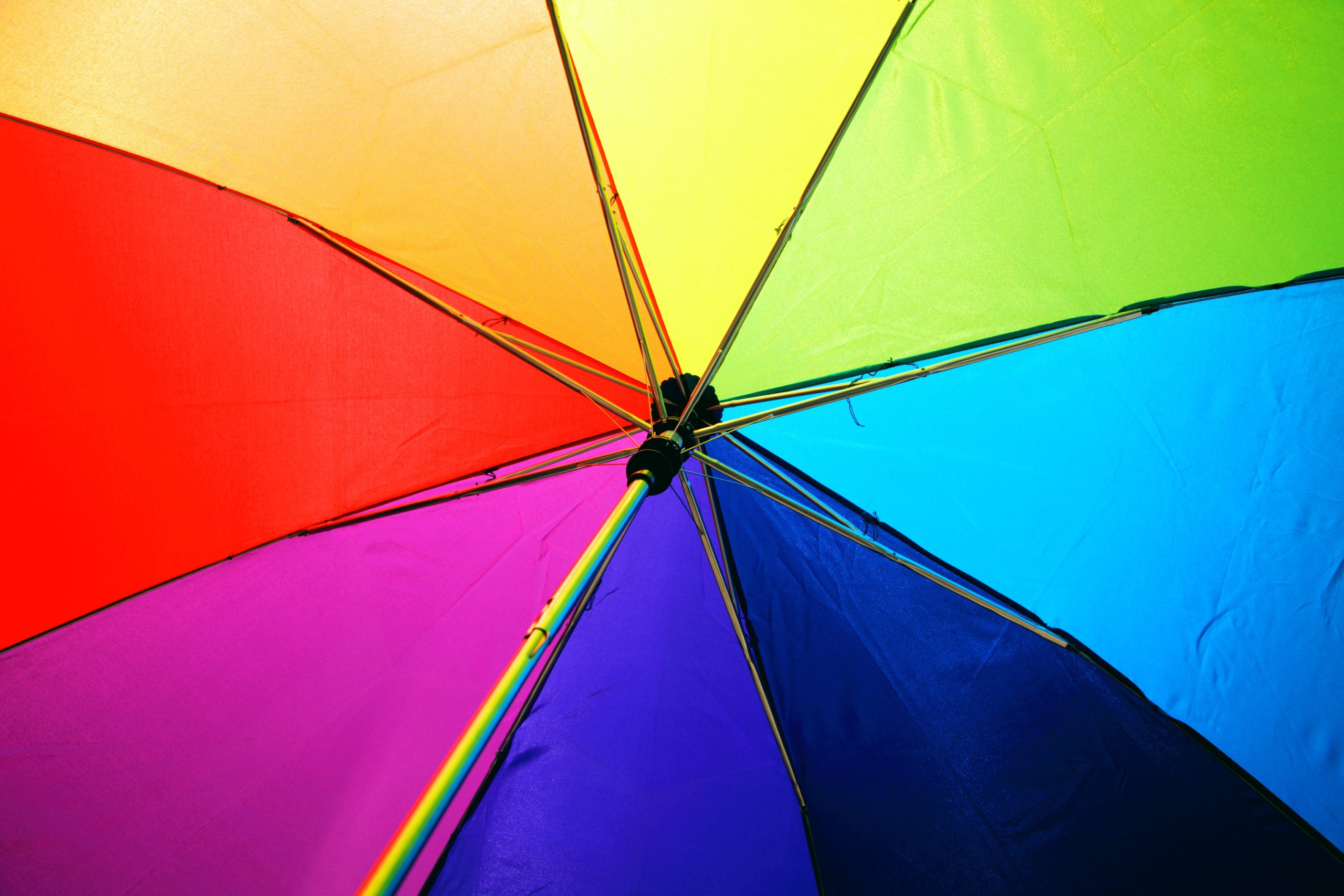
Artistic take on the color wheel through the colors of an umbrella.
Photo by Sharon McCutcheon from Pexels
Welcome to your first session of Color 101! This will be a series throughout the blog that will discuss different colors in a theory based way. To start the series off, analogous colors will be analyzed in regard to makeup application. The theory behind analogous colors from an art perspective is that they are groupings of three colors that are directly next to each other on the color wheel. This is an important factor to take into consideration for makeup application since color can dramatically impact the overall makeup look.
Analogous colors are important when deciding on what eyeshadow colors to wear. For example, with a typical eyeshadow look there are multiple colors chosen. An analogus eyeshadow look has its advantages since the colors will blend together better since they mesh into one another on the color wheel; therefore, the outcome of the eyeshadow colors mixing together in an unpleasing way is eliminated.
Examples of analogous colors include red, orange, and yellow, which can also be referred to as a warm color grouping. The second main group of analogous colors are green, blue, and purple, and these colors are also known as cool colors. The great thing about analogous colors is that warm and cool groups can be mixed together so combinations of blue, purple, and red can work together as well as yellow, green, and blue. There are many different combinations of analogous colors that can be created, which is helpful when creating makeup looks with a focus on an analogous color group.
Not only can analogous colors be taken into consideration for eyeshadow, but they can also be utilized throughout the entire makeup look. For example, it is possible to create different combinations throughout the face with different products such as eyeshadow, lipstick, blush, and the list goes on. An example of this using the warm color grouping of analogous colors could be distributed by using a red lipstick for a pop of color, then using a peach or coral tone blush to get hues of orange. Then the look could be finished off by using any shade of yellow to accentuate the eyes. Color theory is an exciting topic in the makeup world since it has the ability to create unique and artistic looks that are expressive.
I really enjoyed this blog. I always want to do my eye makeup in a more fun and creative way but I also get so intimidated by it and just stick to neutral colors. I have learned about color combinations in my art classes but never even thought about applying that to make up. With this explanation and the really good examples you used, I think I could actually create a makeup look and be more creative with makeup. Good job!
This is a really cool blog concept. I think relating colors back to eyeshadow is a unique perspective that I don’t really think of. I personally just use brown eyeshadow but this made me want to start using more colors in my makeup. I had never heard of the color theory but I am very interested to keep reading your blog to learn more! Good job!